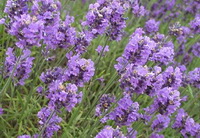Eatable Flowers Guide

If you are searching for an eatable flowers guide you are probably quite new to the subject. In order to cook with eatable flowers you by no means need to be an expert but in order to cook with them safely, you do need to know the basics. While a single article can not hope to be an exhaustive eatable flowers guide, I will now outline the basics of what you need to know to get started.
Eatable Flowers Guide: The Primary Uses
Many people often wonder just what eatable flowers are used for and they forget how common they are in the kitchen, the majority of herbs being classed as eatable flowers after all. Perhaps one of their most common uses however is in the colouring of food that would otherwise look quite bland. They are extensively sued in a variety of Asian and Middle Eastern dishes that consist primarily of milk, eggs or rice. Eatable flowers will also often be found as garnishes and decorations in meals served in high end restaurants. On the flavour side, they are an ingredient in a variety of oils and dressings; they are also particularly useful for stuffing meats as when the meat is cooked the flavour from the eatable flowers infuses with the meet.
Eatable Flowers Guide: The Most Popular Choices
The most popular eatable flowers are mint, rose petals, sage and chives. There popularity stems largely from their rich, unique and vibrant flavours. Less well known are lilac and dianthus but they are certainly worth experimenting with as both are delicious when prepared correctly. Many people are looking for an eatable flowers guide as they are interested in learning about the health benefits of eatable flowers. Some eatable flowers are incredibly rich in vitamins such as dandelion blossoms which are full of Vitamin A and marigolds which are full of Vitamin C.
Eatable Flowers Guide: A Word of Warning
No eatable flowers guide would be complete without a mention of the fact that eating flowers is not without risk. The primary point that you should take from this eatable flowers guide is that, unless you understand how to correctly choose and prepare eatable flowers, you should only eat those that have specifically been sold for that purpose. Many flowers are toxic and not only that even those that are not are often sprayed with pesticides that are more than capable of making them so. As well as the potential to be toxic, there is also the risk that if not properly cleaned with salt water, they may contain insects. Another risk is in the fact that many toxic flowers look almost identical to other breeds that are non toxic. This makes it very easy for amateurs to make mistakes, perhaps with fatal results.
So in conclusion, learning how to cook with eatable flowers can add an entirely new dimension to your favourite home cooked meals. Provided you take caution to choose only those that you know for sure are safe, you can use them to create both delicious and healthy meals.
